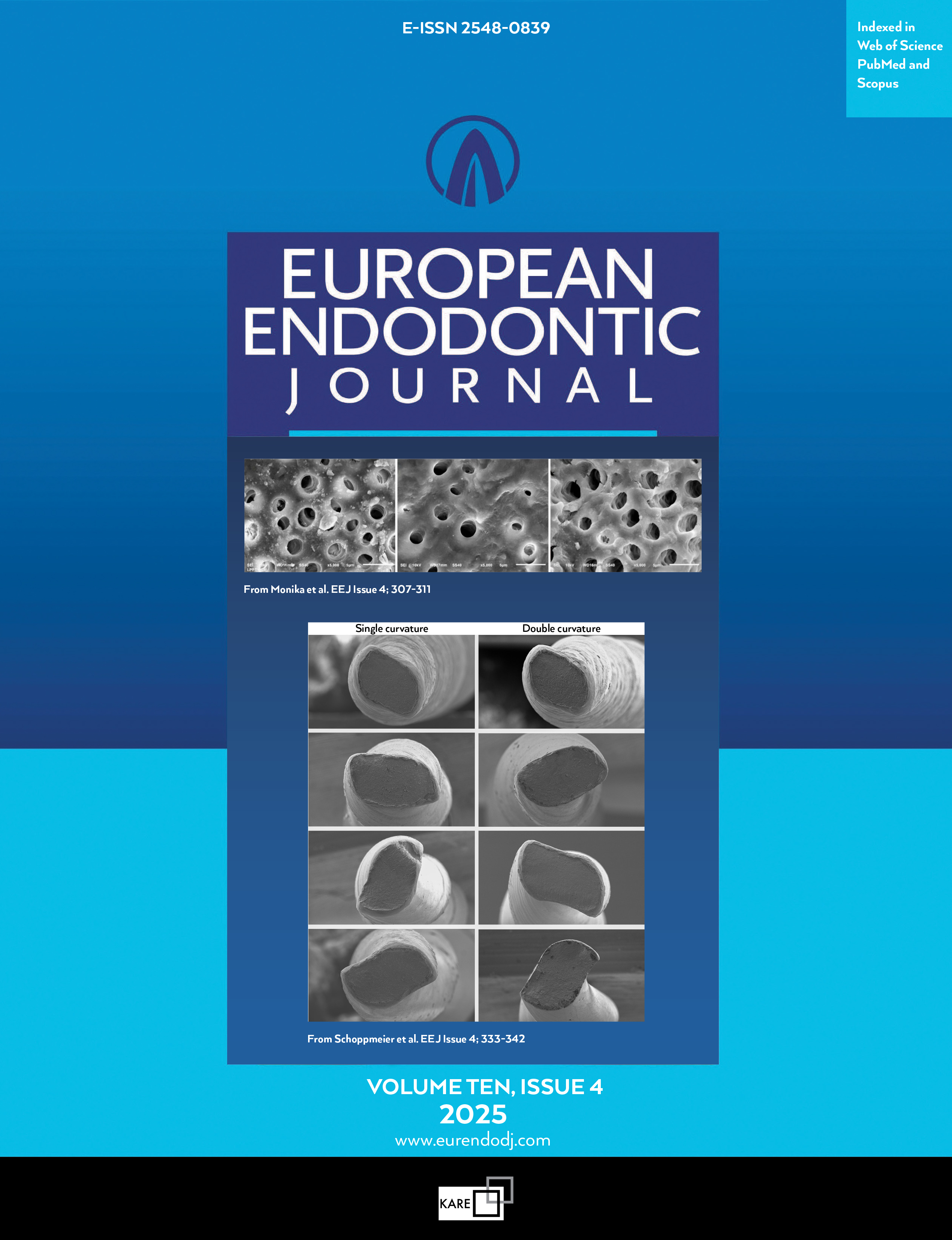Metrics
2024 IMPACT FACTOR
5 year Impact Factor
Eigenfactor Score
2024 CiteScore
Journal Citation Reports
(Clarivate 2025, JIF Rank)
Evaluation of Void Volume and Blood ContaminationInduced Changes in Surface Microhardness of Calcium Silicate-Based Cement, Sealer, and Their Combination (Lid Technique) in Retrograde Filling
Apinporn Kiatpattanakrai1, Panupat Phumpatarakhom2, Anat Dewi1, Phumisak Louwakul11Department of Restorative Dentistry and Periodontology, Chiang Mai University, Faculty of Dentistry, Chiang Mai, Thailand2Department of Endodontics, Thammasat University, Faculty of Dentistry, Pathumthani, Thailand
Objective: This study aimed to compare the effect of blood contamination on the surface microhardness and void volume of a calcium silicate-based cement, sealer, and a combination of the two (Lid technique) when used for retrograde filling.
Methods: Thirty mesial roots of extracted human mandibular molars were divided into three groups: iRoot BP Plus (cement), iRoot SP (sealer), and a combination of the two (Lid technique). The root ends of the teeth were resected and prepared, and the roots were filled. The void volumes were evaluated using micro-computed tomography. Sixty clear resin replicas were created to assess the microhardness after exposure to phosphate-buffered saline and blood; measurements were obtained after 4 and 30 days.
Results: All groups exhibited similar void volumes. The groups retrofilled with iRoot BP Plus and the Lid technique had higher microhardness values than the iRoot SP group. The iRoot SP group displayed similar microhardness values after exposure to PBS and blood. Blood contamination reduced the microhardness values in the iRoot BP Plus and Lid technique groups; however, no significant differences were observed between the measurement times (P > 0.05).
Conclusion: In multi-canal roots, the lid approach is as effective as traditional root-end filling. Blood contamination reduced microhardness emphasizing the significance of handling materials with care during endodontic microsurgery. (EEJ-2024-10-159)
Manuscript Language: English
(123 downloaded)


